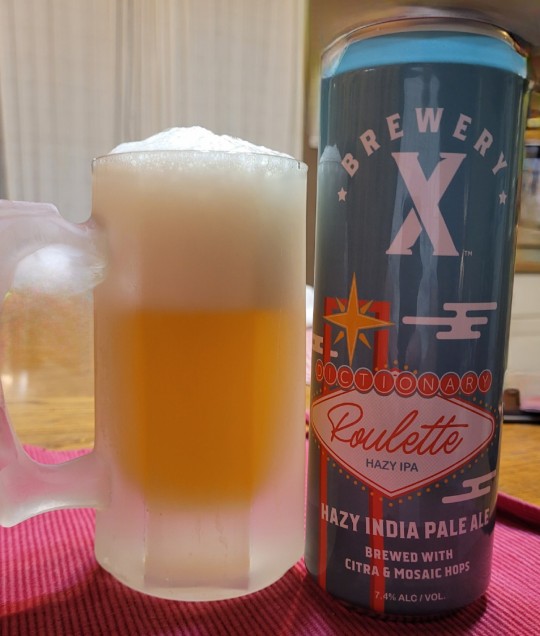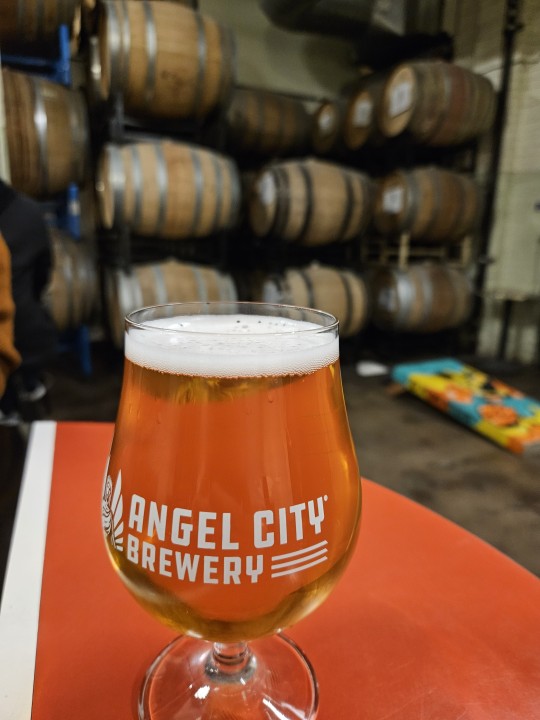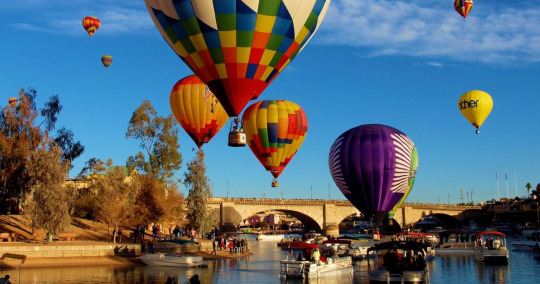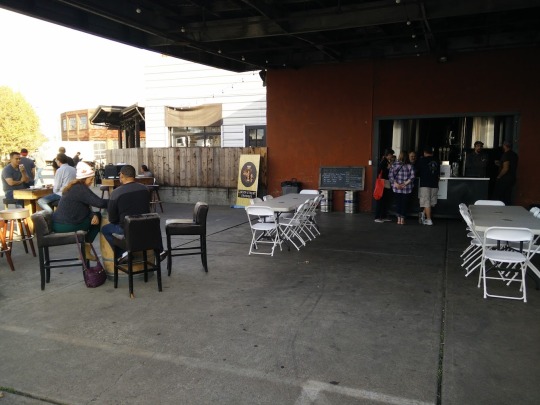#California brewery
Text

#vsn#architecture#design#aesthetic#summer#california#sacramento#brewery#photography#canon#point and shoot#grain#tones#film tones#sunset
7 notes
·
View notes
Text

Though Oxford English is the standard, I prefer Merriam-Webster . . .
#brewery X#dictionary roulette#hazy ipa#hazy india pale ale#citra#mosaic#united way#anaheim#california#independent craft
8 notes
·
View notes
Text







First quarter of 2024 is already over. Trying to remember what I did the start of this year. Only pictures remain...
2 notes
·
View notes
Text

Stone Delicious Citrus IPA lives up to its name! It's a lemon and orange enhanced version of Stone Delicious IPA.
5 notes
·
View notes
Text

IPA
2 notes
·
View notes
Text
North Park’s bar and brewery scene is a lively mix of local craftsmanship and unique flavors, offering something for every kind of drinker. Known for its diverse selection of watering holes, the neighborhood is home to everything from trendy craft breweries and cocktail lounges to laid-back dive bars and taprooms.
1 note
·
View note
Text

Duck Beer, the Official Anaheim Ducks Fan Beer
Brewery X
Anaheim, California, USA
5% ABV
This is the closest thing to the Atwater Dirty Blonde from Michigan I have been able to find, and trust me. I have been looking for it ever since I left The Mitten™.
This brew is just hoppy enough that you know it's serious business, but doesn't taste like a Russian pre-revolutionary, tsarist serf didn't take a piss on the barley. No. This is an adult beer, for the grown PBR drinker who wants to look down their noses at their friends in Bushwick, only in Anaheim.

9/10 paws
0 notes
Link
Check out the latest update on the Seattle craft beer scene! The partnership marks a significant milestone in SHG’s ongoing commitment to supporting the craft beer community in Seattle Dive into how Pike Brewing and Fremont Brewing are joining forces to push the boundaries of quality, innovation, and community. Get ready for a new era of brewing excellence and growth 🍻 #CraftBeerSeattle #PikeBrewing #FremontBrewing
#We are excited to embark on this journey with Seattle Hospitality Group and Pike Brewing. Charles and Rose Ann built Pike into a legendary#and we look forward to honoring and building upon their legacy. Both of our breweries share a deep-rooted passion for brewing exceptional b#Pike#and Fremont is all about.#The partnership marks a significant milestone in SHG’s ongoing commitment to supporting the craft beer community in Seattle#which began with its acquisition of Pike Brewing in 2021. Under the terms of the agreement#Seattle Hospitality Group will provide Fremont Brewing with resources and support to accelerate its growth plans. The acquisition brings to#innovation#and dedication to community. By combining resources and expertise#Pike Brewing and Fremont Brewing will work together to continue to push the boundaries of local craft beer excellence and growth. “We found#and our acquisition of Fremont Brewing is a continuation of this long-term vision#” said Howard Wright#Founder and Chair of Seattle Hospitality Group. “We are excited by this opportunity to invest in a Seattle company that shares our passion#Pike Brewing’s craft beer offerings will continue to exist as separate products within Fremont Brewing’s offerings#with each brand maintaining its existing individual brand identity and product assortment. “I couldn't be more enthusiastic about joining t#” said Charles Finkel#Founder of Pike Brewing. “This move allows us to continue our tradition of crafting exceptional beer while embracing new possibilities for#growth#and innovation. Together#we'll honor the spirit of Seattle's brewing heritage while charting a course for a dynamic and vibrant future.” Matt Lincecum#owner of Fremont Brewing#stated#For more information about Pike Brewing and Fremont Brewing#visit their respective websites at pikebrewing.com and fremontbrewing.com. About Seattle Hospitality Group Founded in 2002 by Seattle entre#Howard Wright#Seattle Hospitality Group (SHG) invests in iconic Pacific Northwest brands led by visionary leaders committed to creating signature experie#hospitality and transportation sectors. SHG holds interest in best-in-class companies across the region including Ethan Stowell Restaurants#Pike Brewing#Kenmore Air and MTRWESTERN. SHG is also affiliated with several iconic attractions in the Pacific Northwest and Northern California includi#Chihuly Garden and Glass
0 notes
Text
Freaks of nature!
#Molly Engelhart#Chef Molly Engelhart#Sage Regenerative Kitchen and Brewery#news article#link#news#article#Los Angeles#California
0 notes
Text
To give International peeps an idea of what the fuck is happening to the Conservatives in the UK right now, leading up to the July 4th election
In a grand total of only 14 days, the conservatives have done the following on the campaign trail.
Announced the election outside of number 10 in the pouring rain with no plans to use an umbrella or take it inside.
Went to a brewery in Wales and asked if they were looking forward to the summer football, only for staff to respond that Wales didn't make the qualification for the cup.
Person who questioned the PM on Television was actually a plant
Went for an interview at the Titanic Quarter in Belfast and the reporter said "are you captaining a sinking ship into this election?"

This picture.
Promised a return of National Service which OBLITERATED the young vote.
A top Tory minister instead of campaigning went to fucking Greece.
A Tory minister gave up her own seat and told everyone to vote for the Reform candidate instead.
Three Tories defected to a different party.
Did a PR thing involving the PM dribbling a football and someone commented on camera "he's as good at football as he is as being Prime Minister" (he was terrible).
Former Tory minister suggested on Twitter that once he loses the election he would bugger off to California to be a speaker at GOP conferences like other former Tory ministers have done, and he had to furiously deny the allegations.
He said he'll get rid of poor value for money University Courses and when asked which ones, couldn't name a single one.
Announced the election but were nearly 200 candidates short to compete and are scrambling to find some.

Hung the flag upside down in their campaign video, which means we're in distress.
youtube
Gave a speech with factory workers, and one woman was so aghast at his bullshit on camera that they sent someone out to stand in-front of her to block her reactions; it has already been satirised.

A high profile conservative MP called a pollster who was live on air, the pollster answered, telling him that he was going to lose his seat by a massive majority. The MP didn't say anything and just hung up. Again, this was LIVE ON AIR.


They went campaigning in Hanley, and in the river behind them, the Liberal Democrat party very slowly sailed by on a little boat. The camera man panned the camera away from the prime minister to focus on the Liberals in the boat slowly sailing down the river.

A new poll shows that for the first time in decades, if not over a century, the Conservatives could be in third place, with Labour (Social Democrat) and the Liberal Democrats becoming the top two parties.
I hope you've been keeping count here, because it's been fourteen days and that is 18 pieces of terrible publicity.
14K notes
·
View notes
Text
Now Traveling: Lake Havasu City, AZ
Was I just there? Maybe. Is there always a good reason to go back? Hell yeah. This time we skipped The Hot Air Balloons and skipped it for some cowboys, I mean rodeo.

Thursday:
If you are wondering when you should judge your leave by time, judge it by sunrise so the sun is at your back as you are driving to your destination. I use an app called Weatherbug to help me determine sunrise time. While we are talking about tech, another good app to have is Gas Buddy so that you can find a gas station wherever you are at (or going). We left about 7 AM, and the weather on the way was eerily pretty. We stopped at College Street Brewery for lunch for mac n cheese, pastrami, and good beer. We met with a window contractor, no trip is complete without some work right? We watched some movies on Amazon Prime. At Javelina's cantina we had nachos and margaritas.
Friday:
I brought breakfast for myself, to try and behave a little bit. I warmed up the dice for Farkle, I really need to have my own dice that I bring up because the bets for the game are up to $5 a person per game. We went back to College Street Brewery for lunch, this place is much easier to get in during the week. We stopped by Walmart for some supplies. Stopped by another glass company place. We have a list back at my grandma's house for local places to eat, and we decided to make one for the lake. Because we did that, we had a new place (for me at least) to go to-Bogie's and Stogies at The Refuge. Food was pretty good. We came back and played Farkle. Before bed, we got a few more movies in.
Saturday:
Today was the first day of the Delbert Days Rodeo in Lake Havasu! I got ready to go in my full cowboy attire. There was so much to do there! Good local food trucks, kids stuff, professional rodeo men and women. I was not prepared for how hot it was, and I got burnt pretty good. We had Angelina's Italian Kitchen for dinner, good as always. A movie and bed, it was a long day in that heat!
Sunday:
So the rodeo does go on for 2 days, but since Superbowl is so close-we thought it might be good to have an in house day to catch the games for the squares we do for the superbowl party. We set up lunch at Azul Agave. Our local friends showed us the progress on the custom home they are building, it is crazy how much construction is happening everywhere! We gassed up, can you believe it is under $3 a gallon out there? We did more farkle, watched some football. We ordered pizza from Red Baron Pizza and it was amazing as always. We started to get ready, got one more movie in, and headed to bed.
Monday:
We headed out around 6:30 AM, AZ time (which is an hour ahead of Cali), and made it home with two stops-one at a rest stop and Wendy's, by 10:15 AM. Pretty good timing. Frosty's are so much better on the road. The first day back is always a little rough for adjustment, but its usually better by the second day back.
Good trip, the timing could not have been better. Back to work and back to reality. There is a wash rag bunny at the condo that always caught my eye, and I think I might have figured out how to make it at home! Keep an eye out for that post, and when in havasu-have fun!
#rant#now traveling#family#adventure#arizona#california#vacation#lake havasu city#london bridge#rodeo#hot air balloons#weatherbug#college street brewery#Javelina Cantina#farkle#The Refuge#Bogie's and Stogies#foodie#mexican food#italian food#angelina's italian kitchen#delbert days rodeo#Azul Agave#superbowl#football#Red Baron Pizza#Wendy's#frosty#wash rag bunny
0 notes
Text



A flight at Etna Brewery.
#Heli-hazy#Phoenix Red#Etna#california#etna brewery#knock you on your butte imperial IPA#old grind porter
7 notes
·
View notes
Text
Exploring the Expertise and Personality of Linden Street Brewery in Dogtown, CA

Nestled in the heart of Dogtown in Oakland, California, Linden Street Brewery has earned acclaim for its craft in producing a diverse range of delicious artisanal brews that capture the distinct essence of this lively neighborhood.
Established in 2009, this local treasure has stood as a cornerstone of the community, consistently upholding its dedication to quality and innovation. The brewery has a fondness for utilizing local ingredients and adhering to traditional brewing techniques.
As we delve into the intricate world of beer craftsmanship at Linden Street Brewery, we will unravel the unique stories behind their signature brews, explore their brewing philosophy, and examine the impact they have on the local community.
This exploration promises to be a journey of taste and revelation, with each frothy pint narrating its own story and extending an invitation to gain a deeper appreciation for the diverse array of flavors that define Dogtown's brewing legacy.
The Craft of Brewing at Linden Street
An exploration into the brewing craft at Linden Street Brewery reveals the significant influence of local elements, meticulous attention to detail, and the incorporation of time-honored techniques into their distinct beer production process.
By sourcing ingredients locally, the brewery fosters relationships with farmers, creating a strong sense of community.
The brewing process itself demands precision and devotion, with each step executed with meticulous care, embracing traditional methods that result in uniquely flavorful beers.
This commitment to heritage and locality creates a sense of connection among patrons. It goes beyond simply savoring a beer; it's about immersing oneself in a piece of Dogtown's history and culture with every sip.
This is the craft of brewing at Linden Street Brewery—an art that seamlessly combines science, tradition, and local pride.
Capturing the Distinctive Flavors of Dogtown
In the quest to capture the unique flavors of Dogtown, Linden Street Brewery methodically incorporates local ingredients into their brews, crafting beverages that authentically represent the area's distinct character.
Brewers source native hops, grains, and even yeasts from Dogtown's microclimate, infusing each beer with an authentic local taste. Aromatic hops contribute floral and citrusy notes, while local yeasts bring a unique complexity.
This meticulous attention to detail and dedication to locality not only enhances the taste of the brews but also establishes a profound connection with the community. Thus, every sip of Linden Street Brewery's beer offers not just a delightful sensory experience but a tangible taste of Dogtown's unique essence.
1 note
·
View note
Text
#beer#ipa#450#california#bar#brewery#alcohol#wax cup#danks#710#710culture#420#weed#dabatory#beers#drinks#drunk#druggy#dope#cold beer#slushie#slushy#freezer#socal#inlandempire#vibes#summer#savage#bartender#barback
0 notes
Text
A Lager Darkly — In Search of Culmbacher, One of America’s Great, Extinct Beers
— Words By Michael Stein | Illustrations By Colette Holston | Published: March 17, 2021


A recipe for Culmbacher lives on in archival perpetuity in the Smithsonian’s National Museum of American History in Washington, D.C. Introduced to American drinkers in the second half of the 19th century, the Lager style was born in Kulmbach, Germany before it found a receptive audience overseas. As its popularity increased in the ensuing decades, scores of breweries started making it, from New York to California.
According to source material, the original, Old World Kulmbacher was a dark beer. It had a pronounced malt flavor and a sweetish taste. For American brewers, it had Bavarian characteristics, in that it was brewed along the lines of a Bavarian Lager, with a strong starting gravity. Perhaps the greatest variation between the German original and the American adaptation is that U.S.-made Culmbacher was sometimes brewed to be a near beer—that is, high in extract and low in alcohol.
Borrowing a page from Germany, American brewers sold copious quantities of kegs to the beer-drinking public in biergartens adjacent to their breweries, or elsewhere across town. In Washington, D.C., where the historic Washington Brewery Company once produced large volumes of the style, numerous biergartens were run by German immigrants. Another was run by a Frenchman who, every July 14, staged a reenactment of the storming of the Bastille. And down by the docks, where there is still a seafood market today, customers would crush foaming seidels as they cracked hard-shelled Chesapeake crabs.
But for all the ways that Culmbacher reflected the push-and-pull of German-American beer culture and identity, the style was not to last. Ultimately, the nativism and xenophobic sentiment that sprung up around World War I meant that German beer traditions began to fall out of favor. Later, the hope that Culmbacher would weather Prohibition was a fanciful one, as most breweries that produced it ultimately closed. Today there is little trace of the style, beyond the recipe for “Kulmbacher” (it was spelled with a “C” in some places, and in others with a “K”) that remains in the National Museum of American History’s archives, on a single, typewritten page.
Still, discovering this trace—knowing that a shadow of this beer existed, even in obscurity—convinced me that Culmbacher could, and deserved to be, revived. When I read the recipe for the extinct near beer, I knew then, there in the archives in 2016, that I had to convince a brewer to help me recreate it.
Two Countries, Two Recipes
As early as 1831, Kulmbach began exporting beer to Saxony and other parts of Germany. Around 1863 and 1864, Kulmbach was exporting as much as 96,000 hectoliters of beer—or over 81,000 barrels. In 1868, the U.S. and Australia were listed as export markets. By 1896, Kulmbach was producing 600,000 hectoliters of Kulmbacher, or over half a million BBLs.
Beer historian Ron Pattinson has, in his collection, an 1879 Kulmbacher Export recipe made with two German malts, Munich and Carafa. The German recipe yielded a beer at 6.2% alcohol by volume, which was typical: In the 1880s, analysis of the Bavarian export showed it ranged from 5.2% to 6.6% ABV. (Once it arrived in the U.S., the style diminished in strength in many cases—Milwaukee’s Blatz Brewing Company, for instance, brewed a Culmbacher at 4.75% ABV.)
There are still many mysteries surrounding Kulmbach’s eponymous style, including its spelling. To begin: Is “Culmbacher” just an anglicized version of its name?

“I would have said ‘Culmbacher’ was an anglicized version, except I’ve seen a Heineken version with that spelling,” Pattinson says. “Which leaves me wondering where the hell it came from.”
“Beers were named after their hometown but they came to be brands and styles brewed elsewhere as well,” says Mark Dredge, author of A Brief History of Lager. “I don’t know why the ‘K’ or the ‘C’ in the spelling. Perhaps it was due to not wanting trademark infringements, as there were plenty at the end of the 1800s.” As an example, he notes the seemingly small but important differences between “Pils” and “Pilsener”: “Heineken was one of the first to add the extra ‘e’ in Pilsner, so maybe that’s why they had a ‘Culmbacher,’” he says. The difference between Dutch “Bok” and German “Bock” is another form of this discrepancy.
Further complicating our understanding of Kulmbacher is the fact that it could be brewed as a very low-alcohol near beer. In the 1920s, Pabst’s Kulmbacher contained less than .5% ABV. As for the recipe I found in the Smithsonian’s archives, which was donated by Walter Voigt—the son of German immigrants who was born in 1906, and who was a member of the Master Brewers Association of the Americas—the piece of paper reads in all capitals: “Malt to be used for various types of near beer.”
Voigt’s Kulmbacher recipe contains four malts: high-dried, pale, caramel, and black. Missing from the recipe are hops, corn, and yeast. As Pattinson puts it, the recipe “looks to have been adapted to U.S. malts. You wouldn’t see high-dried in Germany. The equivalent would be Munich malt.” He goes on to speculate that it “could also be that they had added different malts to give the near beer more body. Body might well be the reason for skipping the adjuncts, too.”
Dark Lager's Bright Rise
In Bavaria in 1863, master glassmaker Simon Hering began brewing on a large scale. His brewery, Export-Bier-Brauerei Simon Hering, started exporting beer to the United States in 1864, during the Civil War.
Hering was the first German brewer I could find who exported Kulmbacher to the U.S. However, there seemed to be earlier awareness of the style: In a German-language newspaper in the Library of Congress, an 1861 article published in Minnesota states that Benzberg’s Dampfbrauerei made Lager in St. Paul, and that it was as good as Culmbacher or Nürnberger.
“Eventually, as the years wore on, the U.S. began to import less Lager in favor of brewing it at home. That change happened gradually, as German-American brewers began to produce their own versions of traditional styles. ”
It was becoming common in the mid 19th century for exported German Lager to be bottled and sold stateside. Such beer wouldn’t have made the trip to America without demand. The largest contingent of immigrants in the Union army were German soldiers. Kulmbacher appealed to those immigrants as a product they could buy from the old country, in the new one.
Eventually, as the years wore on, the U.S. began to import less Lager in favor of brewing it at home. That change happened gradually, as German-American brewers began to produce their own versions of traditional styles.
In 1875, a saloon owner in Wheeling, West Virginia began his Lager beer-bottling business, and would deliver pints and quarts throughout the city. The same dealer advertised Kulmbacher in 1880. In 1889, a Pittsburgh brewer manufactured Culmbacher and Vienna Lagers for city use. And in 1889, the Washington Brewery Company sold more Lager in D.C. than all breweries currently operating in the District today: 36,000 BBLs of beer in 1889, versus a combined 35,857 BBLs from 12 breweries in 2019. By 1900, the Washington Brewery Company boasted that its Culmbacher equaled the finest imported beer. This would become a common claim for American brewers who wished to convince the beer-buying public that their product was just as good as, if not better than, German imports.
As domestic Lager proliferated at the turn of the 20th century, American breweries made dark beers from coast to coast. In its heyday, Culmbacher was brewed everywhere from New York City and Washington, D.C. to Milwaukee and San Jose. By 1909, Kulmbacher and Pilsner were even available at the Criterion Hotel in Honolulu, Hawaii. The beer was likely the imported article, though Honolulu did have its own brewery in 1909, making Pale Lager in the German style.
Today, former Culmbacher producers like Pabst and Blatz are better known than their historical competition. But in addition to businesses like the Washington Brewery Company, little-known breweries like the Fredericksburg Brewery in San Jose and the Lion Brewery in New York City also manufactured Culmbacher.
For Relaxing Times
In the early days of Culmbacher’s spread, the style was advertised mostly on draft. If you wanted it in Los Angeles in 1884, it would cost you five cents a glass for the Kulmbacher Lager brewed by the Fredericksburg Brewery, which could be quaffed at both Jake Phillipi’s Buena Vista or the Grand Central Hotel saloon.
The later transition from the saloon to the biergarten likely allowed brewers to sell more beer. In many cases, it benefited drinkers, too. At the Washington Brewery Company, for instance, the brewery’s biergarten was right next to the brewery. The Culmbacher manufactured, cellared, and eventually sold on draft there never traveled more than a hundred yards.
The concept of drinking for pleasure, rather than intoxication, is commonly credited to the influence of German beer culture. And if it was American to have drinking in saloons limited to men, it was German to have women drinking in biergartens. In 1885 in D.C., one saloon—Kozel’s Saloon on 14th Street—expanded to the back of a lot and took over a second floor. The second floor became a special room for women patrons.

Even if American societal norms frowned on women drinking Culmbacher in public, a case of beer for home use could be delivered in unmarked wagons, lest your neighbor judge. Washington Brewery Company encouraged consumers to “keep your ice box well supplied” with Culmbacher, which was also sold in 24-pint or 12-quart bottles. By the end of the 19th century, the brewery was marketing directly to women: Its beer was pure. It was as good as the imported article. It had double strength. And it was the best of all tonics. In fact, it was unsurpassed as a tonic. Alongside claims that it was calming to a woman’s nerves and stimulating to her appetite, depictions of women drinkers were featured in its ads.
“Double strength” here implies an alcoholic beer, at a time when we know some Lagers were 3% ABV and that the export beer coming out of Kulmbach was 6% ABV. While the Washington Brewery Company’s Culmbacher might not have had the same recipe as the Kulmbacher in the National Museum of American History’s archives, there is no doubt it was advertised to the public as “heavy in body.”
According to Truth, a London periodical in 1889, “American lager beer breweries possess great advantages over others, as thin light beer is the national drink of the United States, and suitable to the climate.” While thin light beer may have been the national drink, it had competition in the rich, potent Dark Lager sold across the country.
Several breweries that made Culmbacher, in addition to other Lager styles, were successful enough that they made attractive entities for acquisition. In 1889, the owner of the Washington Brewery Company was paid $400,000 for his brewery—over $11 million in today’s money. Similarly, in 1891, Valentin Blatz Brewing Company in Milwaukee sold for $3 million to a London investment group, or for between $80 and $90 million today. And while there’s no proof that these breweries were bought directly because of their Culmbacher production, they were able to build their reputations—and their fortunes—off the back of such Lager styles.
By Prohibition, an irrevocable transition had occurred from Kulmbacher as an import, bottled stateside, to Culmbacher, a domestically brewed beer. In the course of five decades, the recipe had also changed: The beer had gone from a strong Bavarian beer brewed with German malt, to, in some cases, a non-alcoholic near beer brewed with American-grown barley.
While the Washington Brewery Company went out of business in 1917, it is noteworthy that Blatz brewed the style even after Prohibition’s repeal. Blatz’s Kulmbacher won silver at the first-ever judged Great American Beer Festival in 1987, in the American Lagers category. At the time, the brewery was owned by G. Heileman Brewing Co. of La Crosse, Wisconsin.
Evil, Traitors, Spirs
Lagers remain America’s most popular beers today. But there was a point in time when temperance advocates and anti-immigration backers viewed them as too German.
At the beginning of the 20th century, Germans still made up the largest ethnic group among immigrants to the United States, as they had done throughout the 19th century. Between 1820 and World War I, nearly 6 million Germans arrived in the United States.
“‘They [Germans] changed America, notably its own beer-drinking culture, and America changed them right back. Naturally that led to some friction ranging from friendly to violent. And for all their ‘palatability’ to white, Anglo-American sensibilities, they could never seem to fully shake nativist animus either. Anti-German xenophobia during World War I showed that.’” — Brian Alberts, Historian
“They [Germans] changed America, notably its own beer-drinking culture, and America changed them right back,” says historian Brian Alberts. “Naturally that led to some friction ranging from friendly to violent. And for all their ‘palatability’ to white, Anglo-American sensibilities, they could never seem to fully shake nativist animus either. Anti-German xenophobia during World War I showed that.”
Anti-German sentiments flared leading up to World War I. From 1850 to 1870, Germans largely gained acceptance from white Americans. But, Alberts says, Germans “were the ‘other’ in a predominately Anglo-American society because [they thought] their neighborhoods stunk of sausage and Limburger cheese, and they let the Lager beer pour every Sunday.”
According to Alberts, Sunday festivities, parades, and biergarten picnics “seemed sacrilegious to some.” These modern aspects of German-American beer culture were regularly celebrated, but the xenophobia associated with bringing your family to the biergarten was often glossed over.
During World War I, that xenophobia extended to food and drink. Sauerkraut was rebranded as “liberty cabbage,” and hamburgers became Salisbury steak. Symphonies were banned from performing Beethoven. Teaching German was struck from many curriculums and angry mobs attacked German-American citizens. Violence resulted in beatings, or even murder.
In 1917, the Trading With the Enemy Act legalized seizing citizens’ businesses and livelihoods. New York brewer George Ehret’s mansion and brewery were both seized. At the time, his Hell Gate Brewery was the biggest in New York City. His estate, property, and possessions, worth $40 million, were all taken.
I asked Maureen Ogle, historian and author of Ambitious Brew: The Story of American Beer, which had had a bigger impact on German-Americans’ lives—the state-sanctioned xenophobia or the daily harassments they experienced. “Probably the state-sanctioned attacks, because those, in effect, gave regular folks ‘permission’ to act violently towards German-Americans,” she says. “Certainly the news, national, that the AG [attorney general] had gone after brewers’ property affirmed a belief that German-Americans were evil, traitors, spies, etc. Never mind that they were American citizens.”
Even citizenship could not save German-Americans from having their property seized, being beaten, or in the case of at least one man, being hung. Robert Prager was a German immigrant who was lynched in Collinsville, Illinois in 1918. Prager had been a mine worker, but was denied membership in the United Mine Workers of America. The dispute ultimately led to his death at the hands of an angry mob of hundreds. The marauders made Prager kiss the American flag and sing patriotic songs before ultimately taking his life. There were no convictions in Prager’s murder, and the 12 men indicted walked away from the trial.
Of course, angry mobs have used terrorism, and lynching, for centuries in America, with Black people making up the vast majority of the victims. Multiple anti-lynching bills have passed the House and the Senate, but never at the same time. The Dyer Anti-Lynching Bill, first introduced in 1918, passed the House of Representatives in 1922. And while the first anti-lynching bill was introduced in Congress in 1900, still to this day no bill has been passed by both houses and signed.
The Comeback of Culmbacher
It’s tricky to pinpoint why Culmbacher was lost to history. In the U.S., multiple factors led to its decline, while according to Pattinson, Kulmbacher isn’t even brewed in Kulmbach today. Other traditional German styles can be found in breweries in Kulmbach, he says, but “no one really brews a beer in what I would call the ‘Kulmbacher style’—something that’s 16 degrees Plato, virtually black, and loads and loads of hops in it.”
Perhaps that’s why, when I saw that typewritten recipe in the museum archive, I knew I had to at least attempt to bring it back. So I reached out to the master brewer who helped me take my first homebrew recipe commercial in 2012: Favio Garcia, the director of brewing operations at Dynasty Brewing Company in Ashburn, Virginia.
“‘Certainly the news, national, that the AG [attorney general] had gone after brewers’ property affirmed a belief that German-Americans were evil, traitors, spies, etc. Never mind that they were American citizens.’” — Maureen Ogle, Historian
Garcia first brewed a Kulmbacher in 2016, sticking entirely to the historical malt bill outlined in the Smithsonian’s archives. Its requirements were 11 lbs of high-dried malt, 33 lbs of pale malt, 3 lbs of caramel malt, and 1 lb of black malt. In 2016, this was translated to 11 lbs of Vienna malt, 33 lbs of pale malt, 3 lbs of Caramunich malt, and 1 lb of Carafa Special 3. We hopped it with the American Empire hop, which originated in Sweden but whose new stock was propagated on a farm on Michigan’s Upper Peninsula.
The resulting beer was historically accurate with its malt proportions, but it wasn’t dark, and it wasn’t the immaculate beer Garcia is renowned for. The 2-BBL batch had a bitterness that clashed with the black and caramel malts; the resulting beer came across as a dry Lager. It was not the full-bodied, sweetish, rich Bavarian beer described in the source material.
In 2020, Garcia returned to the recipe. In addition to a mild tweaking of the recipe from the archives, Garcia also came armed with more primary research conducted by Ron Pattinson. He employed a decoction mash with two steps, and used German and Czech hops instead of American.
Garcia also selected Virginia malt from Murphy & Rude Malting Company. In the mash tun, Pilsner and crystal malts mingled with Vienna malt, made from a 2-row variety of barley called Calypso. It was grown on the Brann & King Farms in Christiansburg, Virginia. Later, he added black malt to color the wort. In the end, Garcia used 660 lbs of Pilsner malt, 300 lbs of Vienna malt, 50 pounds of crystal 40, and 50 pounds of Carafa Special 3.
Where the first batch of Garcia’s Kulmbacher was pale brown, the new iteration looked like a Stout. There was an unmistakable German and Czech hop character to the beer, and it had a perceived sweetness on the first sip, followed by a subtle bitterness and a pleasing dryness on the finish. It was a wonderful expression of fresh malt, and featured a deep bready character that was somehow sweet, full, dry, and very digestible all at once. At 6.2% ABV, it was stronger than most of the Lagers Garcia brews.
The beer, Love Vigilantes, is named after the New Order song. It was a three-part collaboration beer with Dynasty; Dulles, Virginia’s Ocelot Brewing Company; and my beverage research firm, Lost Lagers. My greater goal with the beer is to bring back something stuck in beer history that deserves a place in the beer world today.
My bias is shaped by my father, who came to New York City as a refugee from war-torn Prague. When he came, he only had his mother. His father, a Jewish concentration-camp survivor, couldn’t get a visa. So Petr Stein became Peter Stein, and a boy who lived in a room the size of a closet with his mother wound up becoming a doctor of sociology, a published author, and the director of a graduate sociology program featuring Holocaust and genocide studies. My grandfather experienced the loss of his family in death camps while he survived his interment in the Theresienstadt concentration camp. But he had his life, and his wife and son had visas, and eventually they were reunited in New York.
In spaces where we have the ability to ask hard questions, be it about beer or what we believe to be right or wrong in terms of immigration, we, humans, have endless opportunities to improve ourselves.
“Kulmbacher” on paper in the archives, as it sat for the better part of a century, was made better with its second modern brewing. And its story cannot be told without acknowledging its origins, and the people who made and shaped the style as it evolved. I hope we can all find our own time-lost Kulmbacher—that we can discover and revive vestiges from the past that still speak to, and make sense of, the world today.
— Michael Stein is President of Lost Lagers, Washington, DC’s premier beverage research firm. His historic beers have been served at the Smithsonian’s National Museum of American History and the Polish Ambassador’s residence. Senior Staff Writer at DCBeer, his work appears in Washington City Paper, Brewery History Journal, and CIDERCRAFT Magazine.
— Source Material: Delving into the archives, digging up artifacts, and finding voices in the dark, this series illuminates old traditions that we're still part of today (whether we know it or not). Beer's past shapes its present and future. Follow along as these historians and writers take us back to the source.
— GoodBeerHunting.Com | September 10, 2023
#Source Material#Creating Baverage Brands#Feel Good#Michael Stein#Good | Beer | Hunting#Colette Holston#Culmbacher#America’s Great | Extinct Beers#Smithsonian’s National Museum of American History#Washington D.C.#New York—California#Old World Kulmbacher | Dark Beer 🍺#Bavarian Lager 🍺#Borrowed | Germany 🇩🇪 | American 🇺🇸#Washington Brewery Company#Biergartens#World War#National Museum of American History#Saxony#Beer Historian | Ron Pattinson#Milwaukee’s Blatz Brewing Company#Heineken#Mark Dredge#Pils | Pilsener#Pilsner#Dutch 🇳🇱 Bok | German 🇩🇪 Bock#Pabst’s Kulmbacher#Walter Voigt#Master Brewers Association#Malt
0 notes
